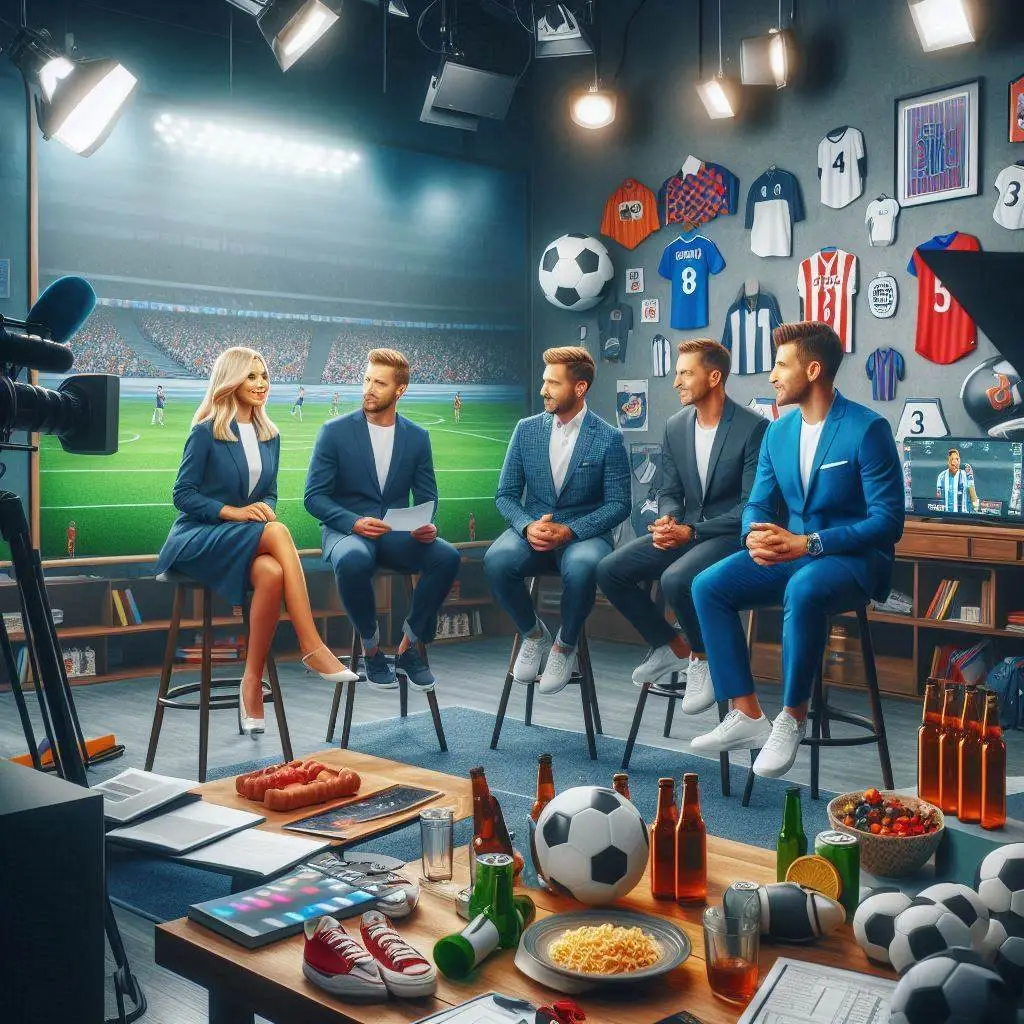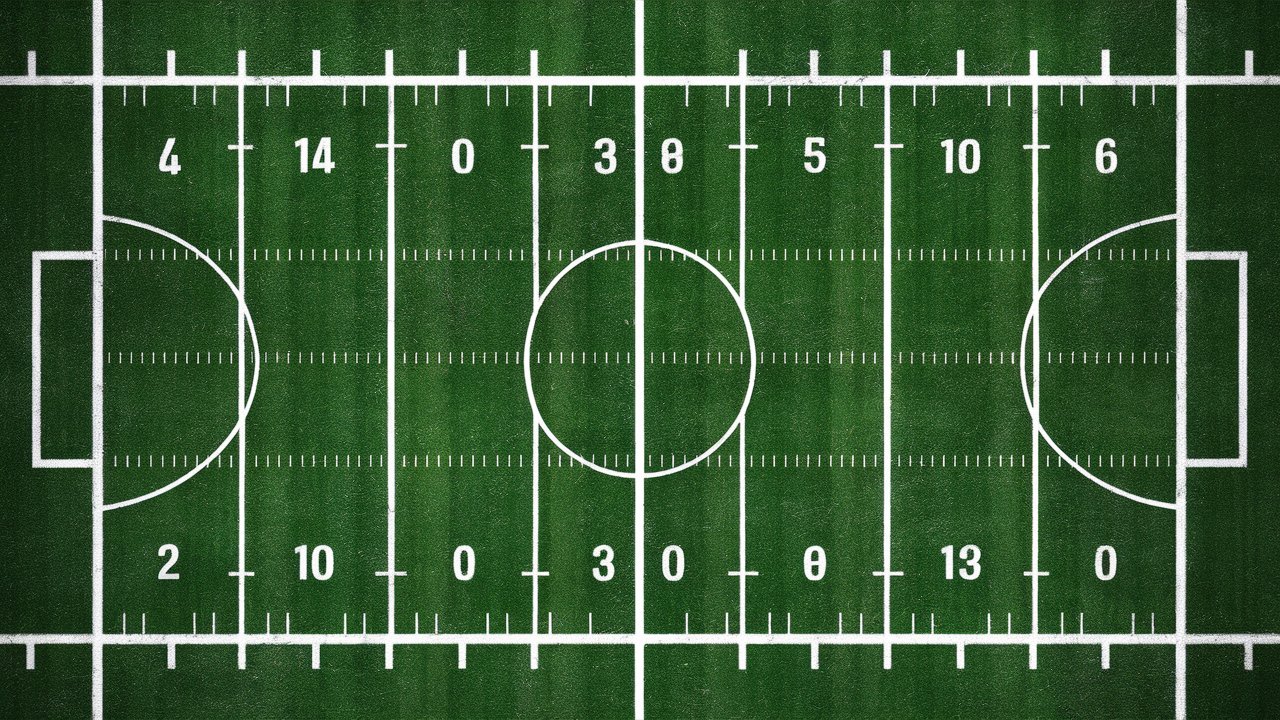Last updated on October 1st, 2024 at 04:17 pm
Football games are a beloved pastime for millions of fans worldwide. Understanding how long these games last on TV is crucial for planning your day, whether you’re hosting a game-day party or simply enjoying the game solo.
This guide aims to break down the timeline of a typical televised football game, providing detailed insights and practical tips to enhance your viewing experience.
- Football games on TV include various segments beyond just the playtime, such as pre-game coverage, commercial breaks, halftime shows, and post-game analysis.
- Knowing the duration of each part can help you manage your time better, ensuring you don’t miss any critical moments.
- By the end of this guide, you’ll have a comprehensive understanding of how long football games last on TV and the factors that influence their duration.
Televised football games, whether NFL or college football, involve much more than the 60 minutes of playtime. Various elements contribute to the overall duration, including stoppages, commercials, and additional segments like pre-game and post-game coverage. Each of these components plays a role in how long you’ll spend in front of the TV.
- Pre-game coverage often starts well before kickoff, offering insights and analysis that set the stage for the upcoming game.
- During the game, commercial breaks are interspersed throughout the quarters, adding to the overall viewing time.
- After the game, post-game shows provide a recap and further analysis, extending the time fans spend engaged with the broadcast.
Understanding these elements is essential for avid football fans who want to maximize their enjoyment. Whether you’re a dedicated follower of the NFL or a college football enthusiast, knowing what to expect in terms of game duration can help you plan better.
This guide will delve into each segment of a televised football game, offering a detailed breakdown and useful tips.
- From pre-game shows to the final whistle, we’ll cover every aspect that affects the length of a football game on TV.
- We’ll explore the differences between NFL and college football game durations, highlighting what makes each unique.
- With this knowledge, you’ll be better prepared to enjoy your football viewing experience to the fullest.
In the upcoming sections, we’ll explore the detailed structure of football games, starting with the pre-game coverage and moving through each quarter of play.
We’ll also discuss the impact of commercial breaks, halftime shows, and post-game analysis on the overall duration. By the end, you’ll have a clear picture of how long football games last on TV and be ready to enjoy every moment.
The Structure of a Football Game

Football games are meticulously structured to ensure both entertainment and fairness. Understanding this structure is key to grasping why a football game lasts as long as it does on TV.
Each game is divided into several segments, each with a specific role in the overall flow of the match.
- Four Quarters: A football game is divided into four quarters, each lasting 15 minutes in regulation play.
- Halftime: After the first two quarters, there’s a halftime break, typically lasting around 12 to 15 minutes.
- Overtime (if applicable): If the game is tied at the end of regulation, it can go into overtime, which can extend the game further.
Four Quarters
The game is split into four 15-minute quarters, making up a total of 60 minutes of regulation play. However, these 15-minute segments are not continuous; they are interspersed with various stoppages.
- Stoppages: Each quarter is interrupted by timeouts, injuries, penalties, and other stoppages that prolong the actual time spent watching the game.
- Clock Management: Teams strategically use their timeouts and manage the clock to their advantage, adding to the overall duration.
- Real-Time Duration: Because of these stoppages, the actual real-time duration of each quarter can vary significantly, often lasting much longer than the allotted 15 minutes.
Halftime
Halftime is a critical break in the game, providing teams a chance to regroup and strategize for the second half. For viewers, halftime offers a mix of entertainment and analysis.
- Duration: Halftime typically lasts 12 to 15 minutes, though it can be longer for special events like the Super Bowl.
- Content: During halftime, viewers are treated to a variety of content, including performances, analysis, and highlights of the first half.
- Impact on Total Time: Halftime adds a substantial chunk of time to the overall duration of the game, providing a necessary break for both players and viewers.
Overtime (if applicable)
When a game is tied at the end of regulation, it can go into overtime. The rules and duration of overtime can vary between leagues and levels of play.
- NFL Overtime Rules: In the NFL, overtime periods last 10 minutes during the regular season and can extend indefinitely until a winner is determined in the playoffs.
- College Football Overtime: College football has a different approach, with each team getting a chance to score from the opponent’s 25-yard line until a winner is decided.
- Extended Viewing Time: Overtime can significantly extend the total duration of the game, often adding excitement but also more time in front of the TV.
Understanding the basic structure of a football game helps fans anticipate the duration of their viewing experience.
In the following sections, we will delve deeper into the specifics of each part, including the pre-game coverage, the impact of commercial breaks, and the post-game analysis.
Pre-Game Coverage

Pre-game coverage is an integral part of the football viewing experience. It sets the stage for the game, providing fans with essential insights and building anticipation.
This segment usually starts well before the actual kickoff.
- Duration: Pre-game shows can start anywhere from 30 minutes to several hours before the game begins.
- Content: These shows typically include player and team analysis, expert predictions, interviews, and highlights from previous games.
- Impact: Pre-game coverage helps fans get into the spirit of the game, though it adds to the total time spent watching football on TV.
Duration of Pre-Game Shows
Pre-game shows vary in length depending on the significance of the game. Major events like the Super Bowl have extensive pre-game coverage, often starting hours before the actual game.
- Regular Season Games: For regular NFL games, pre-game coverage usually starts 30 minutes to an hour before kickoff.
- Major Games: For significant matchups or playoff games, coverage can begin several hours in advance, offering in-depth analysis and special features.
- Special Events: The Super Bowl and other major events feature extensive pre-game shows, sometimes starting as early as the morning of the game.
Content Covered in Pre-Game Shows
Pre-game coverage is designed to engage and inform viewers. It includes a variety of content aimed at enhancing the viewing experience.
- Player and Team Analysis: Detailed breakdowns of the key players and teams, discussing strengths, weaknesses, and strategies.
- Expert Predictions: Insights and predictions from sports analysts and former players, offering their take on the upcoming game.
- Interviews: Interviews with coaches, players, and other key figures, providing personal insights and behind-the-scenes perspectives.
- Highlights: Recaps of previous games, key moments from the season, and highlights that set the context for the current matchup.
Impact on Total Viewing Time
While pre-game coverage adds to the total time spent watching football, it also enriches the experience. It prepares fans for the game, offering valuable information and building excitement.
- Enhanced Engagement: Fans who watch pre-game shows are often more engaged and informed about the game.
- Time Commitment: However, it does require a significant time commitment, especially for those who tune in well before kickoff.
- Balancing Time: For viewers who want the full experience, planning ahead is crucial to manage their time effectively.
Pre-game coverage is just the beginning of the football viewing experience. Next, we will explore the actual playtime during the game, including the impact of stoppages and how they extend the duration beyond the regulation 60 minutes.
The Actual Playtime

The actual playtime in a football game consists of the four quarters of regulation play. While each quarter is 15 minutes long, the total duration of the game is extended by various stoppages and breaks.
- Regulation Playtime: Each quarter is 15 minutes, making up a total of 60 minutes of regulation play.
- Stoppages: The actual duration of each quarter is extended by stoppages such as timeouts, injuries, and penalties.
- Real-Time Duration: Because of these interruptions, the real-time duration of the game is much longer than the regulation 60 minutes.
Regulation Playtime
The core of a football game is the 60 minutes of regulation play, divided into four 15-minute quarters. This time is managed by a game clock, which stops for various reasons.
- Game Clock: The game clock runs during active play but stops for timeouts, injuries, and other stoppages.
- Quarters: Each quarter is a 15-minute segment of play, with a brief break between the first and second quarters and the third and fourth quarters.
- Extended Duration: Although regulation play is 60 minutes, the actual time spent watching can be much longer due to stoppages.
Stoppages During Play
Stoppages are a significant factor in extending the duration of a football game. These interruptions can vary in length and frequency.
- Timeouts: Each team is allowed three timeouts per half, which can be used strategically to stop the clock.
- Injuries: When a player is injured, the game stops to allow for medical attention, adding to the total time.
- Penalties: Penalty calls stop the game for officials to assess and enforce the appropriate yardage or other penalties.
- Reviews: Instant replay reviews for disputed calls also stop the game, often leading to extended breaks.
Real-Time Duration of Each Quarter
The real-time duration of each quarter can vary significantly based on the number and length of stoppages. This variability makes it challenging to predict the exact length of a game.
- Average Duration: On average, each quarter can last between 30 to 45 minutes in real-time, depending on the flow of the game and the number of stoppages.
- Game Flow: Games with fewer stoppages and a continuous flow of play will be shorter, while games with many stoppages will be longer.
- Total Game Time: Overall, a football game typically lasts around three hours in real-time, including all the stoppages and breaks.
Understanding the factors that influence the actual playtime of a football game helps fans manage their expectations and plan their viewing experience. Next, we will delve into the impact of commercial breaks, which are a significant component of the total viewing time.
Commercial Breaks

Commercial breaks are an integral part of televised football games, significantly contributing to the overall duration. These breaks occur at various points during the game, providing necessary funding for the broadcast but also extending the total viewing time.
- Frequency: Commercial breaks are frequent, occurring after every scoring play, change of possession, and at the end of each quarter.
- Duration: Each commercial break typically lasts around two to three minutes, but they add up over the course of the game.
- Impact: The total time spent on commercials can significantly extend the overall duration of the game.
Number of Commercial Breaks Per Quarter
Commercial breaks are strategically placed throughout the game to maximize advertising revenue without disrupting the flow of play too much.
- After Scoring Plays: A commercial break follows each touchdown, field goal, and extra point attempt.
- Change of Possession: When the ball changes hands between teams, a commercial break is usually inserted.
- End of Quarters: Each quarter ends with a commercial break, adding to the total number of breaks per game.
- Other Stoppages: Additional breaks may occur during significant stoppages, such as injuries or instant replay reviews.
Average Length of Each Commercial Break
The duration of each commercial break can vary, but they generally last around two to three minutes.
- Standard Breaks: Most commercial breaks are approximately two minutes long, giving broadcasters enough time to air multiple ads.
- Extended Breaks: Some breaks, especially during major events like the Super Bowl, may be longer to accommodate more or longer advertisements.
- Cumulative Impact: Over the course of a game, these breaks add up, contributing significantly to the total viewing time.
Total Time Spent on Commercials During a Game
The cumulative time spent on commercial breaks can extend the duration of a football game by a considerable margin.
- Regular Season Games: In a typical NFL game, the total time spent on commercials can range from 20 to 30 minutes.
- Major Events: For major events like the Super Bowl, the time spent on commercials can be even higher, as these games attract more advertisers.
- Viewer Experience: While commercials are necessary for funding the broadcast, they also interrupt the viewing experience, making the game feel longer.
Understanding the role of commercial breaks in extending the duration of a football game helps fans manage their expectations and plan their viewing time effectively. Next, we will explore the halftime show, another key component that adds to the overall game length.
Halftime Show
Halftime is a significant break in the middle of a football game, providing both entertainment and a necessary pause for players. For viewers, the halftime show offers a mix of performances, analysis, and highlights, adding to the total duration of the game.
- Standard Duration: Halftime typically lasts 12 to 15 minutes, though it can be longer for special events.
- Content: Halftime shows include musical performances, expert analysis, and highlights from the first half of the game.
- Impact on Total Time: The halftime show adds a substantial chunk of time to the overall duration of the game, providing entertainment and a break from the action.
Standard Duration of Halftime
The length of halftime can vary, but it usually falls within a specific range for regular season games and special events.
- Regular Season: In regular NFL games, halftime typically lasts around 12 to 15 minutes.
- Special Events: For major events like the Super Bowl, halftime can be extended to 30 minutes or more to accommodate elaborate performances.
- College Football: College football halftimes are generally longer, often lasting around 20 minutes.
Typical Content of Halftime Shows
Halftime shows are designed to keep viewers entertained and informed while the players take a break.
- Musical Performances: Major events often feature musical performances by popular artists, especially during the Super Bowl.
- Analysis and Highlights: Halftime shows typically include analysis of the first half of the game, with experts breaking down key plays and strategies.
- Advertisements: Halftime is also a prime time for airing high-profile commercials, particularly during significant events like the Super Bowl.
Impact on Total Game Time
Halftime significantly contributes to the overall duration of a football game, offering a mix of entertainment and analysis.
- Extended Viewing Time: The inclusion of halftime means that viewers spend additional time watching beyond the actual playtime.
- Viewer Engagement: For many fans, halftime shows are a highlight, providing a break from the intensity of the game and offering entertainment and insights.
- Balancing the Experience: While halftime extends the total game time, it also enhances the viewing experience, making it an integral part of the football broadcast.
Understanding the role of halftime in a football game helps fans appreciate this break as part of the overall experience. Next, we will explore post-game coverage, another component that adds to the total duration of a football game on TV.
Post-Game Coverage
Post-game coverage is the final segment of the football viewing experience, providing analysis, interviews, and highlights after the game has ended. This segment helps fans understand the outcomes and implications of the game, extending the total viewing time.
- Duration: Post-game shows can last from 30 minutes to an hour, depending on the network and the significance of the game.
- Content: These shows typically include expert analysis, player and coach interviews, and a recap of key moments from the game.
- Importance: Post-game coverage offers fans closure and deeper insights into the game’s events, making it a valuable part of the viewing experience.
Duration of Typical Post-Game Shows
The length of post-game shows varies depending on the significance of the game and the broadcasting network.
- Regular Season: For regular NFL games, post-game coverage usually lasts around 30 minutes.
- Major Games: For significant matchups or playoff games, post-game shows can extend to an hour or more.
- Special Events: The Super Bowl and other major events feature extensive post-game coverage, including trophy presentations and celebratory moments.
Content Covered in Post-Game Shows
Post-game coverage is designed to provide fans with a comprehensive understanding of the game’s outcome and its implications.
- Expert Analysis: Detailed breakdowns of the game’s key plays, strategies, and turning points by sports analysts and former players.
- Interviews: Interviews with coaches, players, and other key figures, offering personal insights and reactions to the game’s events.
- Highlights and Recap: Recaps of important moments and highlights from the game, providing a visual summary of the action.
Importance of Post-Game Coverage for Fans
Post-game coverage is essential for dedicated football fans who want a deeper understanding of the game and its broader context.
- Closure: Post-game shows provide closure for fans, helping them process the outcome of the game and its impact on their favorite teams.
Weather Conditions
Weather conditions can have a significant impact on the duration of a football game. Adverse weather can cause delays and slow down the pace of play.
- Rain and Snow: Games played in heavy rain or snow can experience more stoppages due to slippery conditions and decreased visibility.
- Lightning Delays: Lightning poses a safety risk and can cause games to be delayed until the threat has passed, significantly extending the total duration.
- Heat: Extremely hot conditions can lead to more frequent hydration breaks, slowing down the pace of the game.
Injuries and Penalties
Injuries and penalties are part of football but contribute to the overall duration by causing additional stoppages.
- Injuries: When a player is injured, the game is paused to provide medical attention, which can range from a few seconds to several minutes, depending on the severity of the injury.
- Penalties: Penalties stop the clock and require officials to assess and enforce the appropriate yardage or other sanctions, adding time to each quarter.
- Reviews and Challenges: Coaches can challenge certain calls, and officials can review plays, leading to additional stoppages and extending the duration of the game.
TV Network Policies
Broadcasting policies and the number of commercials also play a crucial role in determining the total duration of a football game on TV.
- Commercial Breaks: Networks schedule numerous commercial breaks throughout the game, which, while necessary for funding, add significant time to the viewing experience.
- Broadcasting Rights: Networks with broadcasting rights may have specific policies regarding the number and length of commercial breaks, halftime shows, and post-game coverage.
- Special Features: For major events like the Super Bowl, networks include special features, extended pre-game and post-game shows, and more commercials, further lengthening the total duration.
Understanding these factors helps fans anticipate how long a football game might last and plan their viewing time accordingly. Next, we will explore the differences in game duration between the NFL and college football, highlighting what makes each unique.
Differences Between NFL and College Football Game Duration
NFL and college football games, while similar in many ways, have distinct differences that impact their overall duration. Understanding these differences helps fans set their expectations and manage their time effectively.
- Regulation Playtime: Both NFL and college football games have four quarters, but the rules and pace of play can differ.
- Halftime Length: Halftime durations vary between NFL and college games, affecting the total game time.
- Overtime Rules: The rules for overtime are different, which can significantly impact the duration of the game.
Regulation Playtime
While both NFL and college football games consist of four quarters, the way these games are played can influence their duration.
- NFL Games: NFL games have four 15-minute quarters, with a game clock that stops for timeouts, injuries, penalties, and other stoppages. The pace of play can vary, but the structure is relatively uniform.
- College Football Games: College football also features four 15-minute quarters, but the pace can be different due to the style of play, more frequent scoring, and different clock management rules.
Halftime Length
The length of halftime can differ significantly between NFL and college football games, impacting the overall duration.
- NFL Halftime: In regular NFL games, halftime typically lasts around 12 to 15 minutes. Major events like the Super Bowl have longer halftimes to accommodate elaborate performances.
- College Football Halftime: College football halftimes are generally longer, often lasting around 20 minutes, which can add to the total viewing time.
Overtime Rules
The rules for overtime in NFL and college football are distinct, influencing how long a game can last if it goes into extra time.
- NFL Overtime: In the NFL, regular season overtime periods last 10 minutes, with the game ending if either team scores a touchdown. In the playoffs, overtime continues until a winner is determined.
- College Football Overtime: College football uses a unique overtime system where each team gets a chance to score from the opponent’s 25-yard line. This process continues until one team outscores the other in a given round, which can lead to multiple overtime periods and significantly extend the game.
Understanding these differences helps fans appreciate the unique aspects of NFL and college football and better anticipate the duration of each game. Next, we will discuss tips for managing time on game days, ensuring fans can enjoy the full football experience without feeling overwhelmed.
Tips for Managing Time on Game Days
Managing time on game days is crucial for fans who want to enjoy the full football experience without feeling overwhelmed. Here are some practical tips to help you balance your time effectively.
- Plan Ahead: Knowing the schedule and duration of the game helps you plan your day around it.
- Take Breaks: Use commercial breaks and halftime to take care of personal needs and avoid burnout.
- Enhance Viewing Experience: Create a comfortable viewing environment and have snacks and drinks ready to minimize interruptions.
Plan Ahead
Planning ahead is key to managing your time effectively on game days. Understanding the schedule and expected duration helps you set realistic expectations.
- Check the Schedule: Look up the game schedule in advance to know when pre-game coverage starts and when the game is expected to end.
- Block Off Time: Reserve a block of time that includes pre-game coverage, the game itself, and post-game analysis, so you don’t miss any important moments.
- Adjust for Special Events: For major events like the Super Bowl, plan for an extended viewing time due to longer pre-game and post-game shows, as well as a longer halftime.
Take Breaks
Taking breaks during commercial breaks and halftime can help you stay refreshed and avoid feeling overwhelmed.
- Use Commercial Breaks Wisely: During commercial breaks, take a moment to stretch, grab a snack, or use the restroom.
- Halftime Break: Halftime is a longer break that allows for more substantial activities, such as preparing a meal or taking a quick walk.
- Stay Engaged: Taking breaks helps you stay engaged and attentive during the actual playtime, enhancing your overall viewing experience.
Enhance Viewing Experience
Creating a comfortable and enjoyable viewing environment can make a significant difference in your football-watching experience.
- Comfortable Seating: Ensure you have a comfortable place to sit, whether it’s a cozy couch or a reclining chair.
- Snacks and Drinks: Have your favorite snacks and drinks ready before the game starts to minimize interruptions.
- Viewing Setup: Set up your TV and sound system for the best viewing experience, ensuring you don’t miss any action on the field.
By planning ahead, taking breaks, and enhancing your viewing experience, you can manage your time effectively on game days and fully enjoy the excitement of football. Finally, we will discuss how to enhance your football viewing experience with practical tips and tricks.
Enhancing Your Football Viewing Experience
Enhancing your football viewing experience can make watching games more enjoyable and memorable. Here are some practical tips and tricks to elevate your game-day experience.
- Invite Friends and Family: Watching football with others can add to the excitement and create a festive atmosphere.
- Create a Game-Day Atmosphere: Decorate your space with team colors and memorabilia to get into the spirit of the game.
- Engage with the Game: Participate in game-day traditions, such as fantasy football or game-day predictions, to deepen your engagement.
Invite Friends and Family
Sharing the football viewing experience with friends and family can make it more enjoyable and lively.
- Host a Watch Party: Invite friends and family over for a game-day watch party, complete with snacks, drinks, and decorations.
- Social Interaction: Engaging with others while watching the game enhances the experience, providing opportunities for lively discussions and shared excitement.
- Shared Traditions: Create or participate in shared traditions, such as game-day meals or friendly bets, to make the experience more memorable.
Create a Game-Day Atmosphere
Setting the right atmosphere can make a significant difference in your enjoyment of the game.
- Decorate Your Space: Use team colors, banners, and other decorations to create a festive game-day environment.
- Game-Day Snacks: Prepare special game-day snacks and drinks to enjoy during the game, adding to the celebratory atmosphere.
- Wear Team Gear: Wear your favorite team’s jersey or other gear to show your support and get into the spirit of the game.
Engage with the Game
Engaging with the game in various ways can enhance your experience and deepen your connection to the sport.
- Fantasy Football: Participate in a fantasy football league to add an extra layer of excitement and competition to the games.
- Game-Day Predictions: Make predictions about the game’s outcome, key plays, or player performances to add an element of fun and challenge.
- Social Media Interaction: Engage with other fans on social media platforms, sharing your thoughts and reactions during the game.
By inviting friends and family, creating a game-day atmosphere, and engaging with the game, you can significantly enhance your football viewing experience.
This comprehensive guide aims to provide you with all the information and tips needed to enjoy football games on TV to the fullest.
Conclusion
Football games on TV offer a dynamic and engaging viewing experience that goes beyond the 60 minutes of regulation play.
Understanding the various components that contribute to the total duration of a game—from pre-game coverage and commercial breaks to halftime shows and post-game analysis—helps fans manage their time and enhance their enjoyment.

Ethan Richards is a dedicated sports writer who excels in delivering timely and accurate sports news. His meticulous research and clear, concise writing make his articles both informative and enjoyable. Ethan’s commitment to quality journalism sets him apart in the industry.











